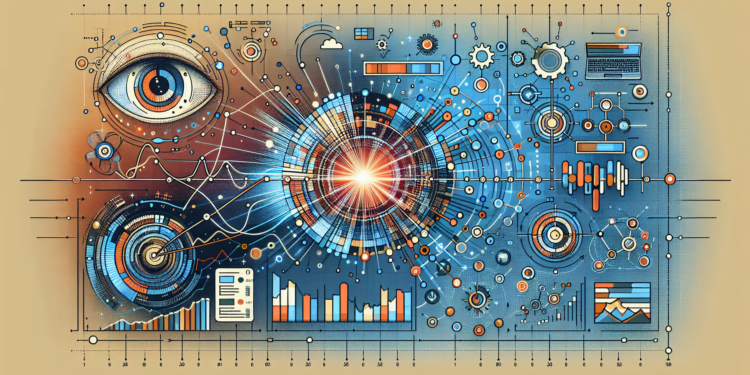Artificial Intelligence (AI) has extended its influence in the analysis of time series, enabling significant advancements in various fields such as economics, meteorology, health, and others. This article delves into methods, concepts, and applications of AI in the processing of time series, offering an essential guide for understanding and applying these techniques in the research and development of cutting-edge technology.
Definition and Application of Time Series in AI
A time series is a set of observations recorded at regular time intervals. The analysis of these series involves understanding hidden patterns, trends, and seasonality. In the context of AI, this analysis is crucial for predicting future events and providing relevant insights from historical data.
Learning Methods for Time Series
Recurrent Neural Networks (RNNs): RNNs are powerful for modeling data sequences thanks to their ability to retain information from previous states. They are widely used in time series prediction due to how they process information sequentially.
Long Short Term Memory (LSTM): A variant of RNNs specifically designed to overcome the problem of long-term dependency. The design of LSTM cells allows for retaining relevant information over extended periods of time.
Gated Recurrent Unit (GRU): A simplification of LSTMs that also resolves the long temporal dependency problem with a less complex update and reset mechanism, offering similar results with a more streamlined architecture.
Ensemble Techniques to Improve Accuracy
The use of ensembles involves combining the predictions of multiple models to improve accuracy and robustness in the analysis of time series. Methods such as bagging and boosting are applied to reduce variance and bias, respectively.
Decomposition of Time Series
To simplify the analysis, time series can be decomposed into components, such as trend, seasonality, and noise. This decomposition enables the addressing and modeling of each component independently, improving the understanding and accuracy of predictions.
Tools and Libraries in AI for Time Series Analysis
There are various tools for analyzing time series, like TensorFlow and Keras, which provide support for building and training models based on RNN, LSTM, and GRU. Prophet and ARIMA are other specific tools for time series prediction, widely used in time data analysis.
Case Studies
A relevant case study is the prediction of the stock market using LSTM, analyzing the AI’s ability to overcome the inherent randomness of the market. Another example is the prediction of energy demand, where AI models help anticipate consumption peaks and optimize supply.
Challenges and Future Directions
Despite the progress, there are challenges such as handling multivariate time series, the need for large volumes of historical data, and the interpretation of complex models. Future research includes improving models to deal with uncertainty and the application of more advanced deep learning techniques.
Conclusion
The study of AI applied to time series has enormous potential to transform industries and improve decision-making. Understanding the theory, techniques, and tools detailed in this article will equip specialists with the necessary knowledge to tackle practical problems and contribute to the advancement of this exciting area.






















